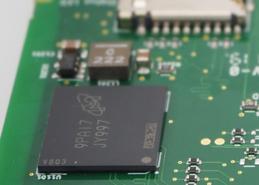Articles by Jürgen Borleis
eMMC Hardware Partitioning
When designing an embedded system, one must consider both the application and the underlying hardware in combination, if the intended long-term stability is to be achieved. While we discussed the necessity of software updates in previous posts, in this article I describe a way to use a memory subsystem corresponding to its physics to achieve the best retention and lifetime of the whole system.
Static Filesystem
Whenever it is a requirement to be able to switch off an embedded device without any previous preparation, the next question is about the consistence of the used filesystem. If this filesystem is used to be written with new content and this new/changed data hasn't done it's way to the persistent media when the power is cut, this new/changed data is lost.
PTXdist: Did you know? Today: Just a reboot
While the development on an embedded system I need to reboot it quite often. Doing so I appreciate to keep the required steps as less as possible and be sure the embedded system uses the recently changed data in a consistent manner.
PTXdist: Did you know? Today: Beautify your developer's life
Simplify and beautify your developer's life. An example.
Barebox-2014.02.0
The Barebox project has released version 2014.02.0 of its bootloader:
PTXdist 2014.01.0
The PTXdist project has released version 2014.01.0 of the embedded linux build system:
New PTXdist Features in 2013
The main new feature was the introduction and tuning of the toolchain 'wrapper': This wrapper ensures a new level of control about how a PTXdist project is build. In earlier days, the binary results relied more or less on the buildsystem each package comes with. With the new wrapper, a package's buildsystem calls the wrapper instead of gcc and other toolchain components, and all command line parameters given to it can be checked or extended. The wrapper provides enforcement of:






